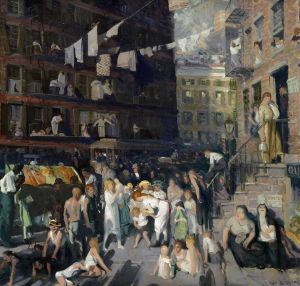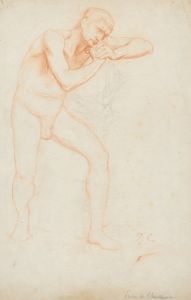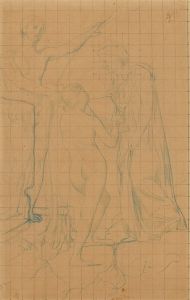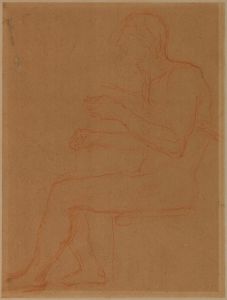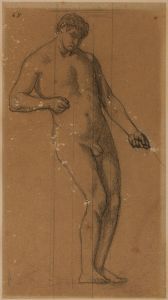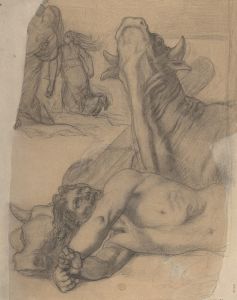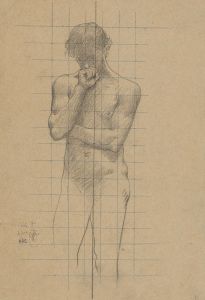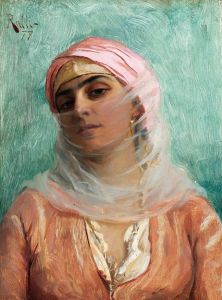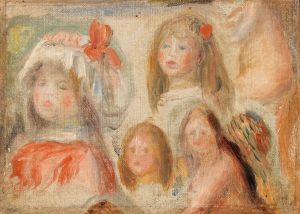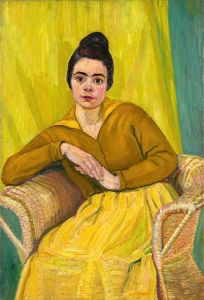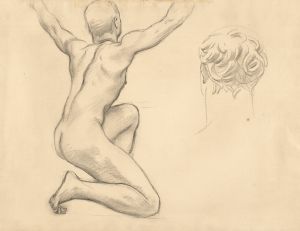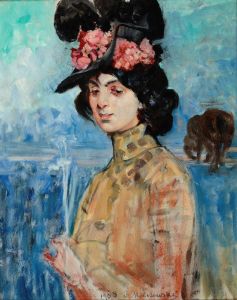
Tête de Jeune Fille
A hand-painted replica of Pierre Puvis de Chavannes’s masterpiece Tête de Jeune Fille, meticulously crafted by professional artists to capture the true essence of the original. Each piece is created with museum-quality canvas and rare mineral pigments, carefully painted by experienced artists with delicate brushstrokes and rich, layered colors to perfectly recreate the texture of the original artwork. Unlike machine-printed reproductions, this hand-painted version brings the painting to life, infused with the artist’s emotions and skill in every stroke. Whether for personal collection or home decoration, it instantly elevates the artistic atmosphere of any space.
Pierre Puvis de Chavannes was a notable French painter of the 19th century, renowned for his mural paintings and contributions to the Symbolist movement. One of his works, "Tête de Jeune Fille" (Head of a Young Girl), exemplifies his unique style and artistic approach. Although specific details about this particular painting are limited, it is reflective of Puvis de Chavannes' broader body of work, which often focused on allegorical and classical themes.
Puvis de Chavannes was born on December 14, 1824, in Lyon, France. He initially studied at the École Polytechnique but soon shifted his focus to art, studying under various artists, including Eugène Delacroix. His career spanned several decades, during which he developed a distinctive style characterized by muted colors, simplified forms, and a sense of timelessness. These elements are likely present in "Tête de Jeune Fille," as they are hallmarks of his artistic approach.
Puvis de Chavannes' work was heavily influenced by classical art and the frescoes of the Italian Renaissance, which he adapted into his own form of modern mural painting. His paintings often depicted serene and idealized figures set against tranquil landscapes, conveying a sense of harmony and introspection. This approach can be seen in his larger works, such as the murals in the Panthéon in Paris and the Boston Public Library.
"Tête de Jeune Fille" likely captures the essence of Puvis de Chavannes' interest in the human form and expression. His portraits and figure studies often focused on capturing the inner life and emotional depth of his subjects, rather than merely their physical likeness. This emphasis on mood and atmosphere over detailed realism is a defining characteristic of his work.
While "Tête de Jeune Fille" may not be as widely recognized as some of his larger compositions, it contributes to the understanding of Puvis de Chavannes' artistic legacy. His influence extended beyond his own time, impacting subsequent generations of artists, including the Symbolists and Post-Impressionists, who admired his ability to convey emotion and spirituality through simplified forms and compositions.
Puvis de Chavannes was a founding member of the Société Nationale des Beaux-Arts and served as its president, further cementing his influence in the art world of his time. His work was celebrated during his lifetime, and he received numerous accolades, including the Grand Cross of the Legion of Honor.
In summary, while specific details about "Tête de Jeune Fille" are scarce, the painting is representative of Pierre Puvis de Chavannes' broader artistic vision. His focus on classical themes, emotional depth, and harmonious compositions made him a pivotal figure in 19th-century art, whose legacy continues to be appreciated today.





